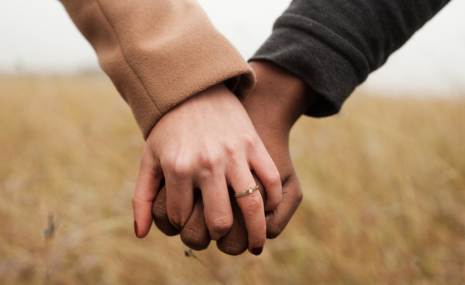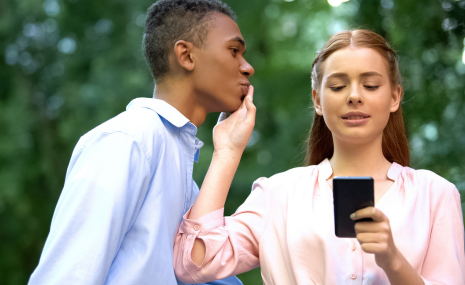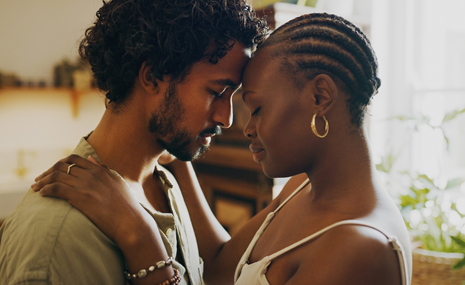Interracial and Intercultural Marriage Trends in Japan
 They call international marriage in Japan; Kokusai Kekkon. These are marriages between the Japanese and non-Japanese spouses; mainly Koreans, Chinese, and Americans.
They call international marriage in Japan; Kokusai Kekkon. These are marriages between the Japanese and non-Japanese spouses; mainly Koreans, Chinese, and Americans.
When Americans occupied Japan between 1945 and 1952, thousands of American servicemen married Japanese women during this period. There had been great fascination with Japanese women by American men from the onset. By the year 1975, the number of interracial marriages was estimated to be between 50000 and 60000. Interracial romance is therefore not a new thing to the Japanese.
Find your soulmate on TemptAsian










Today, the frequency in interracial and intercultural marriages has increased rapidly with some changes: The rate of Japanese men marrying non-Japanese spouses has increased ten fold. More Japanese men are marrying interculturally compared to Japanese women since after the World War II. The spouses come from all over the world. This rise in interracial marriages is attributed to the change in the Japanese Nationality Law in 1985. Fumiteru Nitta writes in Kokusai kekkon: Trends in intercultural marriage in Japan:
"Until then, the patrilineal principle was used, permitting only a child with a Japanese father to become a Japanese national. Under the new "bilineal" principle, a child can be a Japanese national if either parent is Japanese. The changes were initiated in part by a group of Japanese women married to non-Japanese".
The rise in interracial marriages has been widely publicized in the mass media. There is also greater acceptance to interracial marriages today, compared to earlier decades. However very few studies have been published about this.
Of the three groups, most Japanese men intermarry with Korean women; followed by the Chinese, then Americans, then 'other nationalities'. As for the Japanese women, they marry Koreans mostly, followed by the Americans, then the Chinese, then 'other nationalities'. Compared to earlier decades, there has been a rapid increase in marriages between both Japanese men and women and the 'other nationalities' group. It was found that most of the earlier data didn't include intermarriages that happened outside Japan.
The fact that Koreans have the largest number of intermarriage with the Japanese can be attributed to Koreans having come to Japan before and during World War II. Most remained there with their descendants. This means most second-generation and third-generation Koreans were born, raised, educated and live in Japan. These only know Japan and speak Japanese. So when we look at their intermarriages, the cultural aspect of it has been neutralized, compared to Japanese-Korean intermarriages with Koreans who were born and raised in Korea.
Most of these interracial and intercultural marriages happen when the Japanese go to study and work abroad. Being an export oriented country, there is also a lot of contact with foreigners when conducting business. The best candidates for interracial marriages are those young Japanese men and women who leave their families behind and go abroad alone for work and studies.
Social status plays an important part in intermarriages. According Kikumura and Kitano in A Picture of the Japanese Americans, "the comparable
intermarriage rates of males and females of Japanese Americans in Los Angeles could be a result of the males’ economically secure and successful status." Since most Japanese men have prestigious jobs and higher levels of education, that increases their desirability for interracial marriage.
The socioeconomic status of Japan as a country plays a role here. It makes Japanese men desirable to international women and it also presents an opportunity for these men to go abroad for business and education. This creates more opportunities for the Japanese to meet non-Japanese men and women abroad; hence the increase in intermarriage.
When it comes to marriages that happen abroad, there is a high possibility that the numbers of Japanese men and women in interracial marriages are similar. Much as some may return to Japan with their spouses, most stay abroad. Since no systematic information on international marriages of Japanese nationals overseas are collected even by the Ministry of Foreign Affairs, quantifying them for the study is a bit of an issue. Despite that, the numbers are significant.
Just like most interracial marriages, there are a few challenges that present themselves. Non-Japanese partners have a hard time adjusting to this culture. The other challenge comes from differential sex role expectations between Japanese and Americans and other Westerners. These sometimes result in conflict within such marriages. Communication barriers between the couple and between the foreign partner and the families may also arise. Education and socialization of mixed children is also another challenge.
But if its meant to be, just like other interracial couples worldwide, love conquers all.
Responses to "Interracial and Intercultural Marriage Trends in Japan"
Be the first to leave a comment
You must be logged in to post a comment.
























































































